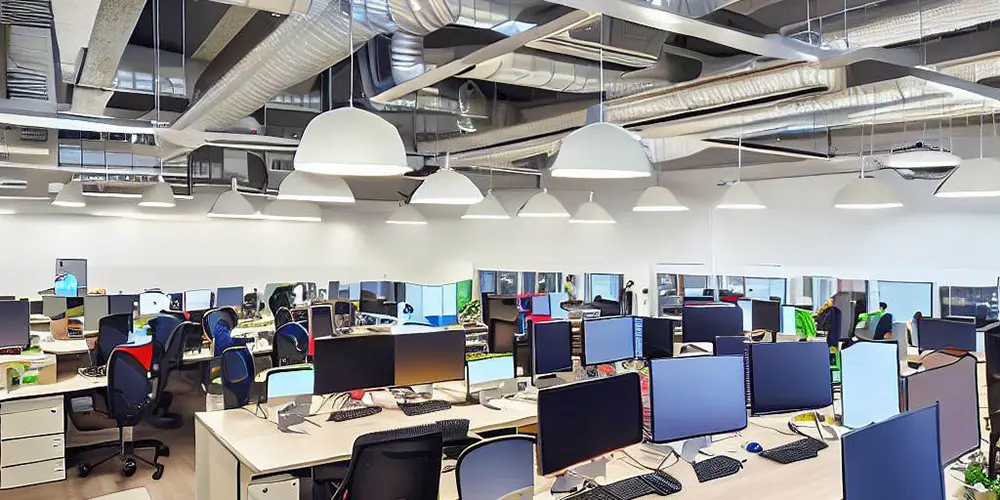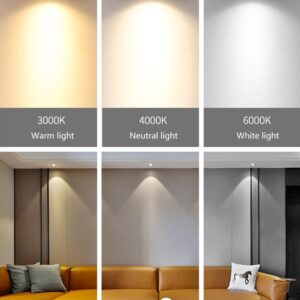JOIN US FOR THE NEWEST LED LIGHTS IN MARKET
Enter your email below to get 10% off your first order

Navigating the landscape of office lighting fixtures can be a daunting task. Whether you’re in the process of crafting a home office or mapping out a corporate workspace, selecting the appropriate lighting solution is of utmost importance. This is fundamental because lighting holds a considerable influence over elements like the levels of productivity, the emotional environment, and the overall ambiance of the workspace. In this all-encompassing guide, we’ll address your pressing inquiries about office lighting to empower you to make a knowledgeable choice.
The first point of curiosity often revolves around terminology. What, indeed, is office lighting called? In the office lighting industry, office lighting is commonly referred to as “Tube Light, Linear Light or Parabolic Troffer”. This term signifies a type of lighting that is designed to help employees perform specific tasks more effectively and comfortably. It is distinguished from general or ambient lighting, which provides overall illumination to a space, and accent lighting, which draws attention to specific elements or areas.
Task lighting in an office setting is typically designed to minimize eye strain, prevent glare, and reduce shadows. It can come in the form of desk lamps, under-cabinet lights, or directional ceiling fixtures, depending on the workspace configuration and the tasks being performed.
Selecting the optimal lighting for an office space can be a nuanced decision, one that hinges on various elements such as the specific type of work conducted, the workspace’s architectural design, and the unique preferences and requirements of the employees. Despite this complexity, a few principles are widely recognized as critical to the process.
Firstly, a balanced approach to lighting is vital. A combination of general, task, and accent lighting can cater to different needs throughout the day and across different work tasks.
LED lights are widely recognized as an optimal choice for office environments. They offer significant benefits such as energy efficiency, long lifespan, and a wide range of color temperatures to choose from.
Additionally, natural daylight should be incorporated wherever possible. This can be achieved through windows, skylights, or light tubes. Daylight has been shown to boost mood and productivity, while also offering energy-saving benefits.
Finally, controllable lighting is a significant plus. Being able to adjust the intensity and color temperature of the light allows employees to customize their environment to their comfort and task needs.

When deciding between yellow (warm) and white (cool) light, it’s essential to understand the impact of color temperature on work efficiency and comfort.
Cool, white light, with a color temperature over 6000K, mimics the effect of daylight and is generally energizing. Light of this type can foster improved focus and attentiveness, making it an ideal choice for tasks that necessitate a keen eye for detail, or during early morning periods when levels of alertness may be diminished.
Contrarily, a warm, yellow light with a color temperature under 3000K, instills a tranquil and cozy ambiance. It’s less prone to inducing eye strain, thus making it a suitable option for prolonged work durations. However, it may not be the prime choice for tasks demanding high degrees of precision and detail.
A balanced alternative exists in the guise of nature white light, boasting a color temperature of roughly 4000K. It gracefully merges the attributes of both warm and cool light and serves as a versatile option for a plethora of office tasks. A multitude of contemporary office spaces utilize adjustable lighting systems, facilitating alterations in color temperature in alignment with the time of day or nature of the task at hand.

The requisite quantity of light in an office setting – quantified in lumens – is contingent on the type of tasks carried out within the workspace. As a broad guideline, an office workspace should ideally maintain a total light emission of approximately 500 lumens per square meter.
However, it’s crucial to give due consideration to the lighting requirements of specific tasks. For example, detailed tasks like reading or drafting may require additional task lighting with an output of up to 750 lumens.
Remember, more light isn’t always better. Too much light can cause glare, leading to eye strain and discomfort. It’s crucial to balance the intensity of light across the workspace to prevent overly bright or dim areas.
The role of office lighting fixtures in fostering a conducive and comfortable workspace cannot be overstated. By acquainting yourself with the relevant jargon, acknowledging the significance of a balanced approach to lighting, and customizing the illumination to suit the workspace and the tasks executed within it, you can create an office environment that promotes the wellbeing and productivity of its users. Whether your lighting preference is biased towards yellow or white, bear in mind the crucial role of lumens in enhancing workspace efficiency and comfort. Remember, the goal extends beyond merely selecting a light fixture; it’s about lighting up your workspace to pave the way for success.
$99.00 Original price was: $99.00.$79.00Current price is: $79.00.
$199.00 Original price was: $199.00.$99.00Current price is: $99.00.
$1,299.00 Original price was: $1,299.00.$1,189.00Current price is: $1,189.00.
$299.00 Original price was: $299.00.$279.00Current price is: $279.00.
$299.00 Original price was: $299.00.$279.00Current price is: $279.00.
$299.00 Original price was: $299.00.$259.00Current price is: $259.00.
$499.00 Original price was: $499.00.$399.00Current price is: $399.00.
$299.00 Original price was: $299.00.$189.00Current price is: $189.00.
$299.00 Original price was: $299.00.$259.00Current price is: $259.00.
$199.00 Original price was: $199.00.$119.00Current price is: $119.00.
$699.00 Original price was: $699.00.$239.00Current price is: $239.00.
$699.00 Original price was: $699.00.$389.00Current price is: $389.00.